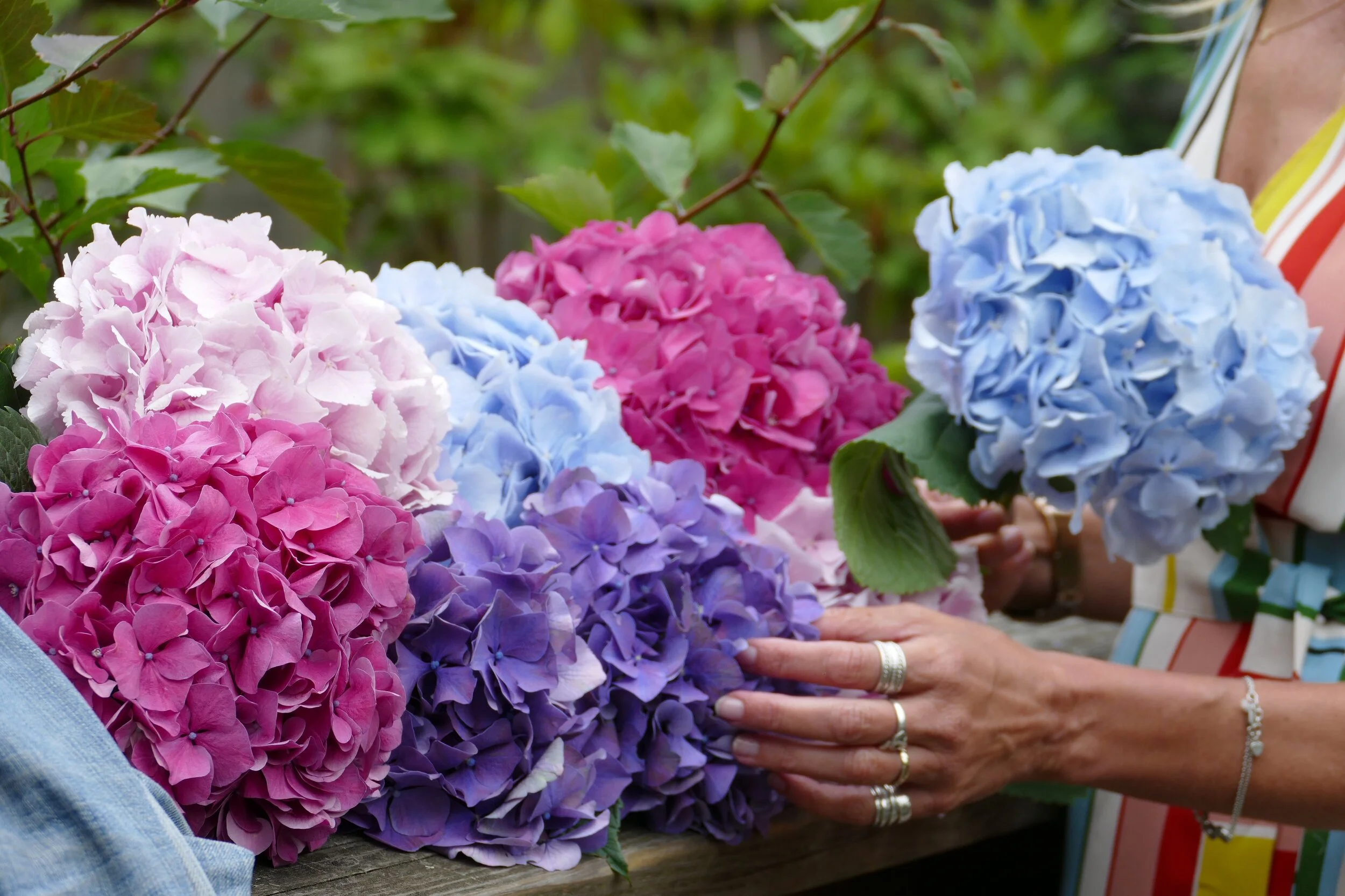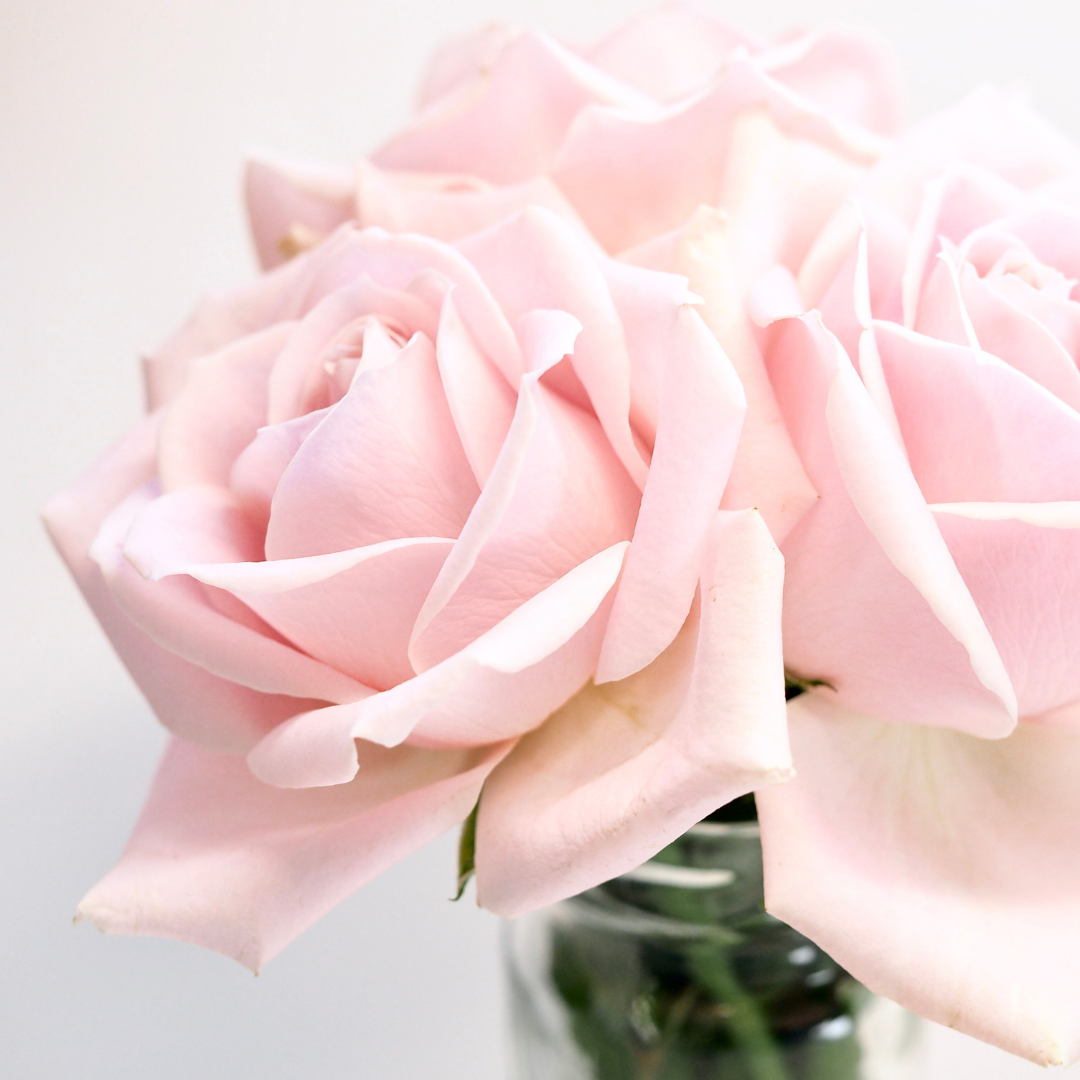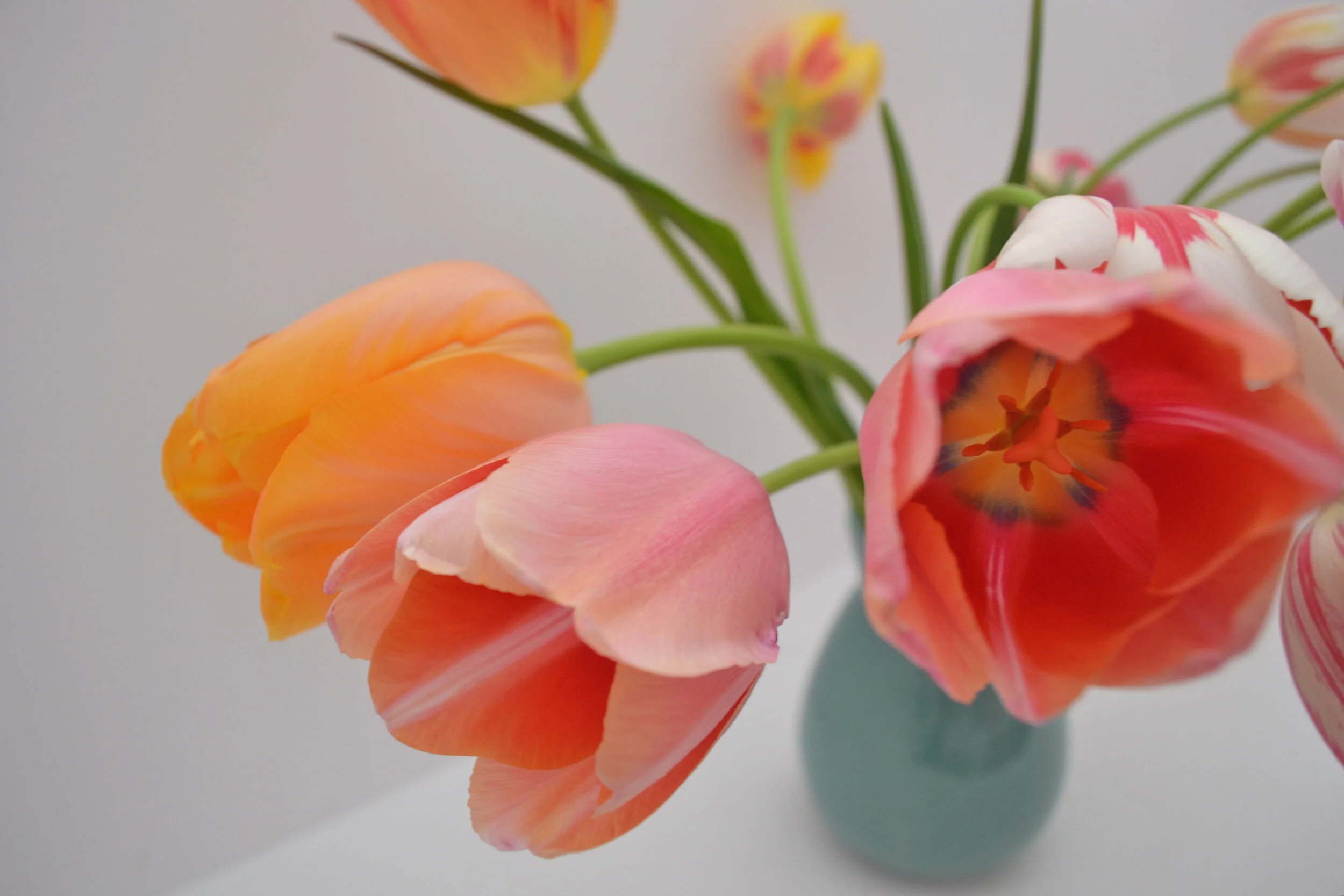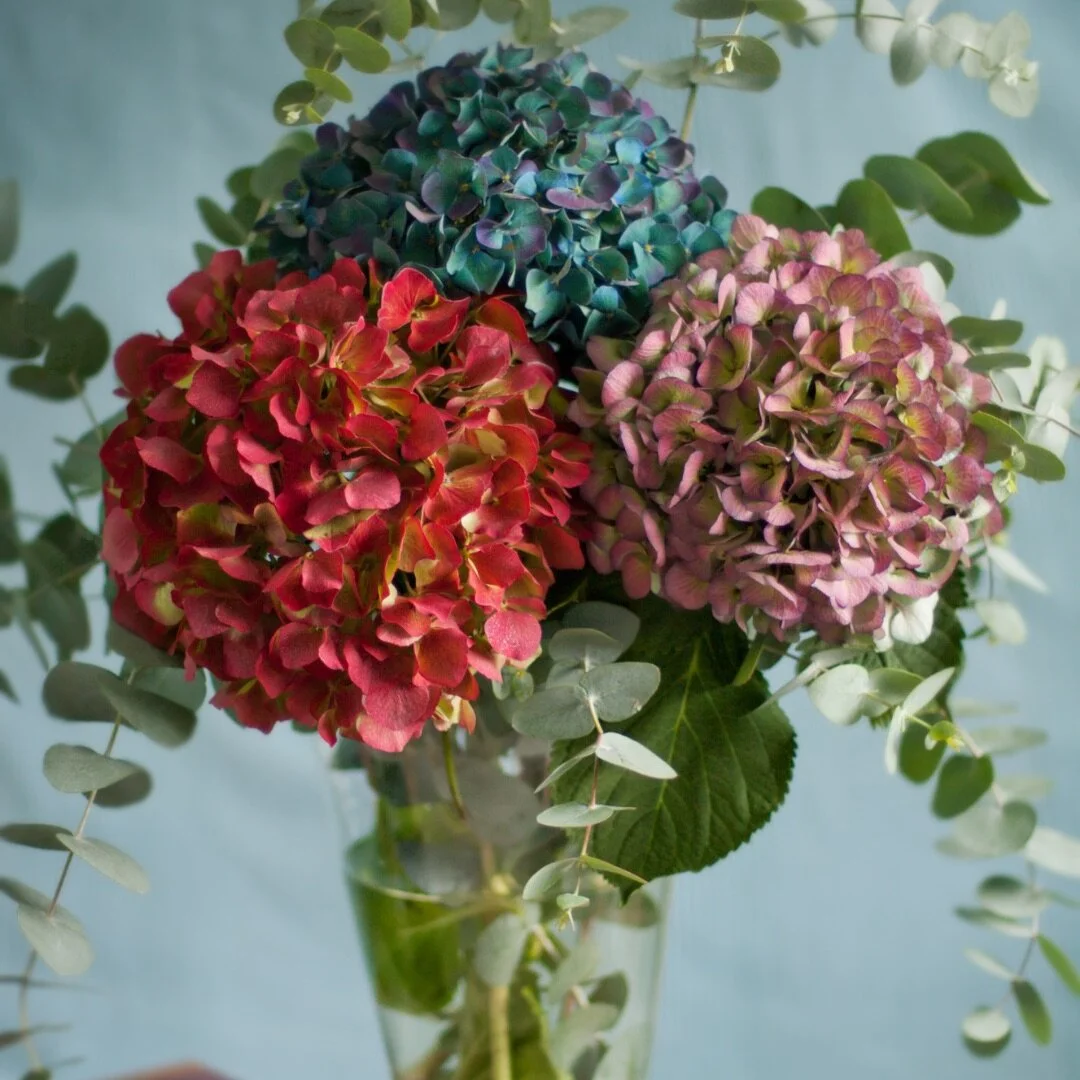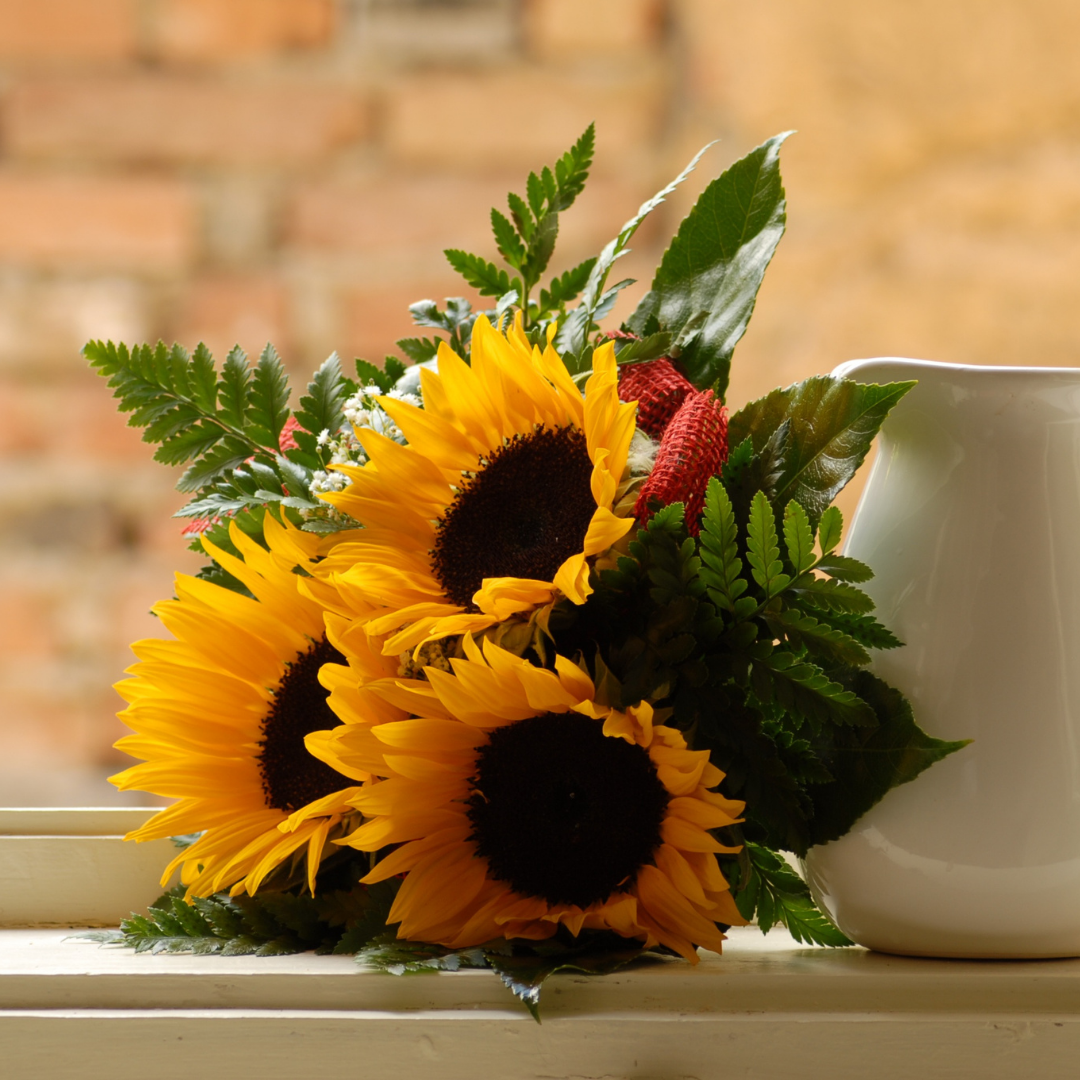Nine Flowers and Facts you may be Surprised to Learn
The colour of a hydrangea is determined by the type of soil it’s grown in.
We all love flowers. They’re a gift to us from nature, that we re-gift by giving to others. They’re beautiful and colourful, and fragrant, and they put a smile on our face. They’re also really interesting! I’ve chosen nine flowers to share some fun facts about them.
1 - Sunflowers: Young sunflowers move throughout the day, following the sun from east to west. Why does this happen? It has to do with the growth of the sunflowers. It’s a result of different sides of the stem, growing at different times of the day. The side of the stem facing east grows quickly during the day, and the side facing west grows quickly at night. Thus they move from east to west, following the direction of the sun. Once the sunflowers are mature, their growth slows down and they gradually stop tracking the sun altogether.
2 - Roses: Roses are related to many herbs and trees that include edible fruits. The rose family is called ‘rosaceae’. Included in this are a number of trees: apple, pear, peach, nectarine, plum, cherry, and almond, as well as berries including raspberries and strawberries. If you look closely at these trees and bushes when they’re flowering, you’ll see the similarities between them all.
3 - Tulips: At one point in history, tulips were more valuable than gold. In Holland in the 17th century, tulip bulbs became so desirable they could cost more than ten times an annual middle-class income. That crazy time became known as ‘Tulip Mania’. Eventually, the tulip market crashed, and while they no longer have the same monetary value, they’re still one of the most popular springtime flowers.
4 - Chocolate Cosmos: This flower actually smells like chocolate. It’s true! This delicate bloom actually smells like chocolate (and the colour actually looks like a red velvet cake). But while it smells like chocolate, don’t be tempted to eat it as it’s not an edible flower.
5 - Gerberas: Gerberas help you get a good night’s sleep. Gerba’s are so bright and cheerful looking you don’t think of them as a ‘restful’ flower. But because they release small amounts of oxygen throughout the night, they make a great flower to have next to your bed.
6 - Hydrangeas: The colour of a hydrangea is determined by the type of soil it is grown in. The acidity level of the soil is what determines if you will have a blue, pink, or purple bloom. If the soil has a higher pH level, the hydrangeas will be pink. As the pH level gets lower they will become purple or blue.
7 - Daffodils: Daffodils are used as currency. On the island of Scilly, as rent for his lands, Prince Charles is paid one daffodil! (That would be a nice rent to have to pay.)
8 - Lilies: You can extend the vase life of lilies with one simple act. Fresh cut lilies can last up to two weeks. But you can extend their vase life even further by removing the pollen from the centre of the flower. When each bloom opens, carefully remove the pollen off the stamen. Be careful to not get any pollen dust on the petals as it will eat away at the flower shortening its life span.
9 - Daisies: How did the daisy get its name? One theory is related to its physical appearance. It’s said the yellow centre of the daisy resembles the sun. That was known as ‘the day’s eye’. Eventually, that just morphed into ‘daisy’.
Before I started researching for this post, I knew some of these facts but didn’t know all of the explanations. Others were completely new to me. What did you learn?
(I’m now working on another post with uncommon facts related to edible flowers.)


